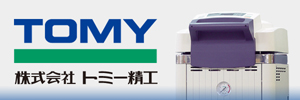PD-062 (JTK):Ecotoxicological and chemical evaluation of effluents from a petroleum chemical plant and the receiving coastal water
1Environmental safty and health center, Formosa Plastics Group, 2Department of Aquatic Biosciences, National Chiayi University, 3Department of Tropic Agriculture, National Pintung University, 4Department of Marine Biology, National Taiwan Ocean University
The purpose of this study was to monitor and evaluate ecotoxicity of effluents from a petroleum chemical plant and the receiving coastal water in Mailiao, southern Taiwan. Samples were taken from chemical waste water treatment plant effluent, one flue gas desulfurization wastewater, and receiving seawater from 2010 to 2011. In addition to physical and chemical analyses (including volatile organic compounds (VOCs) and semi volatile organic compounds (SVOCs) analyses, three acute toxicological tests: using marine microalgae (Isochrysis galbana), oyster larvae (Crassostrea angulate), and luminescent bacteria (Aliivibrio fischeri ) with MicrotoxR to characterize each effluent and receiving coastal water. Total of 30 VOCs (0.64 to 4.44 μg/L) and 22 SVOCs (4.39 to 79.0 μg/L) were detected in these samples.
in this study, we also determined acute toxicity of the individual or the mixture of chemical compounds detected in the effluent such as benzene, mono-substituted benzene (toluene, ethylbenzene, styrene), di-substituted benzene (xylene), naphthalene, and a chlorinated hydrocarbon (dichloromethane) by Microtox. Among the tested organic compounds dichlormethane and naphthalene shows the highest (2876.99 to 3641.41 mg/L ) and lowest EC50 value(7.25 to 9.26 mg/L ). Comparison of the EC50 and EC1 toxicity of individual compound by hierarchical cluster analysis, EC50 toxicity of mono- and di-substituted benzene were grouped together, benzene, naphthalene and dichlorormethane (DCM) were grouped together. However, the EC1 toxicity of these compounds revealed that benzene, mono- and di-substituted benzene were grouped together, naphthalene and DCM was separated.
Concentration of the PAH compounds in the Formosa Plastics Group (FPG) petrochemical effluent and the receiving coastal water were far below the non observed effect concentration of these compounds or their mixtures. No acute toxicity were observed in the receiving coastal water by these three different organisms.
keywords: chemical plant effluent,electrical power plant effluent,acute toxicity,oyster larvae,Microtox




